Text

April 12, 2024 - White-necked Babbler (Stachyris leucotis)
These babblers are found in lowland and foothill forests in parts of Thailand, Malaysia, Brunei, and Indonesia. Foraging alone, in pairs and in small flocks, sometimes with other species, they eat insects, picking their prey from leaves on or near the ground. They build compact cup-shaped nests from grass, roots, and fibers where females lay clutches of three eggs. Classified as Near Threatened by the IUCN, their population is declining moderately quickly due to habitat loss.
43 notes
·
View notes
Text

April 11, 2024 - Small-billed Elaenia (Elaenia parvirostris)
Breeding in parts of Bolivia, Argentina, Uruguay, and Paraguay, these tyrant flycatchers winter in northern South America. Foraging alone or sometimes in loose flocks, they feed on insects as well as small fruits, picking prey from surfaces while perched or hovering and capturing it in short flights. They build cup-shaped nests from small twigs, plant fibers, mosses, spiderwebs, and lichen. Females lay clutches of two or three eggs.
#small-billed elaenia#tyrant flycatcher#elaenia parvirostris#bird#birds#illustration#art#woodland#birblr art
53 notes
·
View notes
Text

April 10, 2024 - Purple-backed Fairywren (Malurus assimilis)
Found throughout much of Australia, these fairywrens live in shrubby habitats. They feed on arthropods and seeds, foraging in pairs or small flocks in shrubs and on the ground. Females build domed oval-shaped nests with side entrances from grass, twigs, bark, fur, and feathers in bushes, trees, fern clumps, or other vegetation. They incubate clutches of two to four eggs. Helpers from previous broods assist the parents with feeding the chicks.
#purple-backed fairywren#fairywren#malurus assimilis#bird#birds#illustration#art#grassland#birblr art
74 notes
·
View notes
Text

April 9, 2024 - Olive-winged Bulbul (Pycnonotus plumosus)
These bulbuls are found in a variety of habitats including forests, scrub, and grasslands across parts of Southeast Asia. Foraging alone, in pairs, or sometimes in family groups, they eat berries, fruit, seeds, and invertebrates. They build deep cup-shaped nests from dead leaves, creeper stems, fine fibers, and grass, often decorated with bamboo leaves. Females lay clutches of two eggs.
57 notes
·
View notes
Text
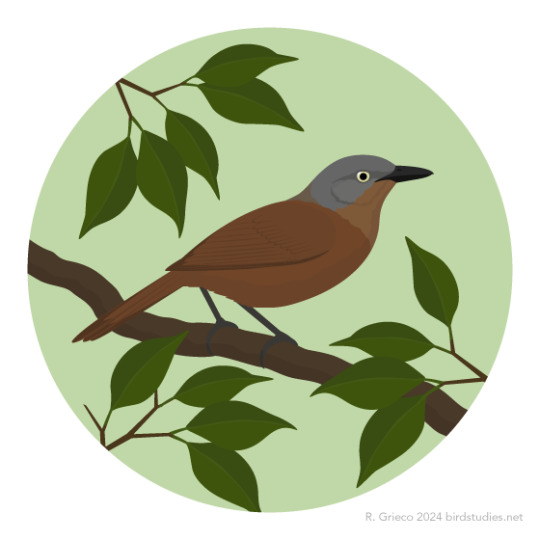
April 8, 2024 - Ashy-headed Laughingthrush (Argya cinereifrons)
These laughingthrushes are found in parts of southwestern Sri Lanka in lowland and mountain forests. They eat invertebrates, small vertebrates, fruit, and seeds, foraging in flocks, sometimes with other species, on or near the ground in leaf litter and vegetation. Breeding cooperatively, they build large nests from twigs, dry leaves, rootlets, and lichen in bushes or small trees. Females lay clutches of three to four eggs, though more than one may lay them. Multiple group members incubate the eggs and care for the chicks. They are classified as Vulnerable by the IUCN due to moderate population declines from habitat loss and degradation in their small and fragmented range.
#ashy-headed laughingthrush#laughingthrush#argya cinereifrons#bird#birds#illustration#art#tropical#birblr art
42 notes
·
View notes
Text
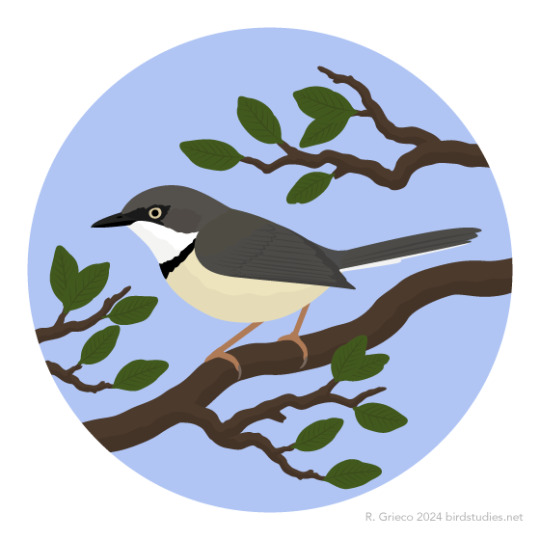
April 7, 2024 - Bar-throated Apalis (Apalis thoracica)
Found in parts of eastern and southern Africa, these birds in the cisticola family live in forests, woodlands, and thickets. They eat insects, their eggs and larvae, spiders, and some berries and seeds, picking prey from surfaces, sometimes while hovering, or catching it in flight. Females do most of the nest construction, building oval or round nests from rootlets, grass, lichen, moss, spiderwebs, and other materials in shrubs or other low vegetation. They incubate clutches of two to four eggs while males feed them. Both parents feed the chicks.
46 notes
·
View notes
Text

April 6, 2024 - Cordoba Cinclodes, Comechingones Cinclodes, or Chestnut-winged Cinclodes (Cinclodes comechingonus)
Found in open grassy habitats in central Argentina, these birds in the ovenbird family migrate north or to lower elevations outside of the breeding season. Usually foraging in pairs on the ground, they eat insects, mollusks, and seeds, picking their prey from surfaces. They build their nests at the ends of tunnels dug into banks or in rock crevices from grasses, hair, and leaves. Females lay clutches of two eggs.
#cordoba cinclodes#cinclodes#ovenbird#cinclodes comechingonus#bird#birds#illustration#art#grassland#birblr art
60 notes
·
View notes
Text
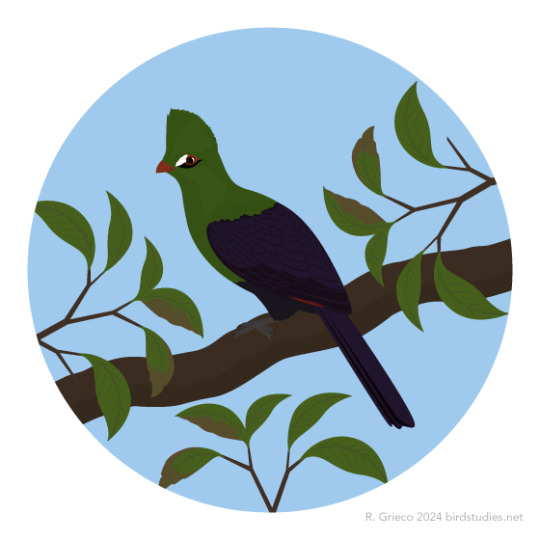
April 5, 2024 - Guinea Turaco, Green Turaco, or Green Lourie (Tauraco persa)
These turacos are found in lowland forests, often near water, in parts of western Africa. They feed on a variety of fruits, as well as flowers and buds. Their nests are bulky platforms made from sticks and fine twigs. Both parents incubate the clutches of two eggs and care for the chicks.
59 notes
·
View notes
Text
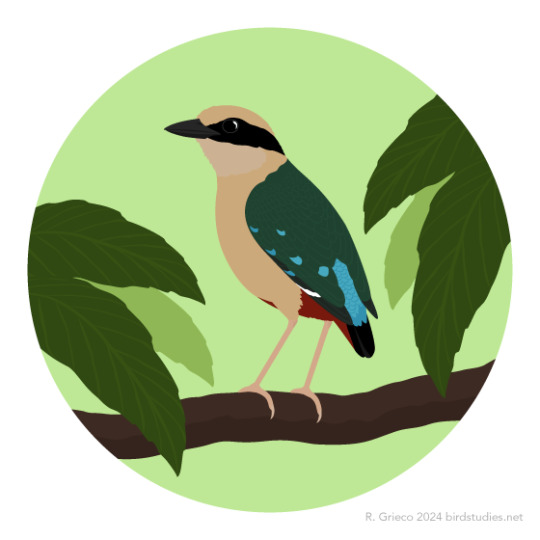
April 4, 2024 - African Pitta (Pitta angolensis)
Found in a spotty range in parts of central and southeastern Africa, these pittas live in rainforests, thickets, swampy areas, and scrub. Some populations migrate within Africa from the southeast to equatorial regions. Foraging on the ground in leaf litter, they eat insects and other invertebrates, including snails, earthworms, and millipedes. They build domed nests with side entrances and sometimes landing platforms from dead leaves, twigs, rootlets, and tendrils in thorny trees. Females lay clutches of one to four, but usually three, eggs.
64 notes
·
View notes
Text
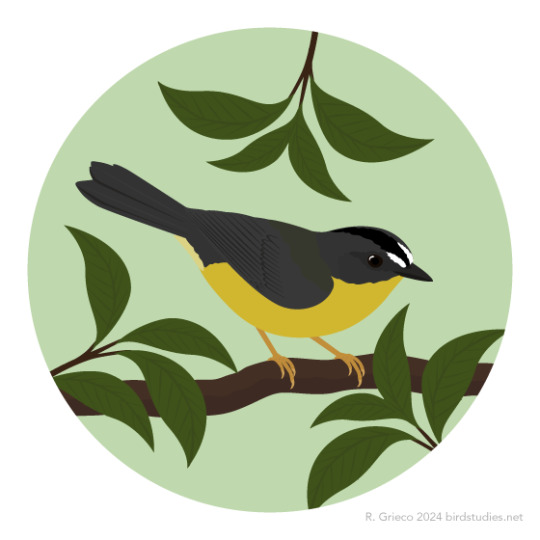
April 3, 2024 - Gray-and-gold Warbler (Myiothlypis fraseri)
These warblers are found in forests in parts of Ecuador and Peru. Foraging alone or in pairs in the understory, they feed on insects, though the details of their diet are not known. Only two of their nests have been described, both domed cups with side entrances built from dry grass and plant fibers on steeply sloped ground. Both parents feed the chicks.
53 notes
·
View notes
Text
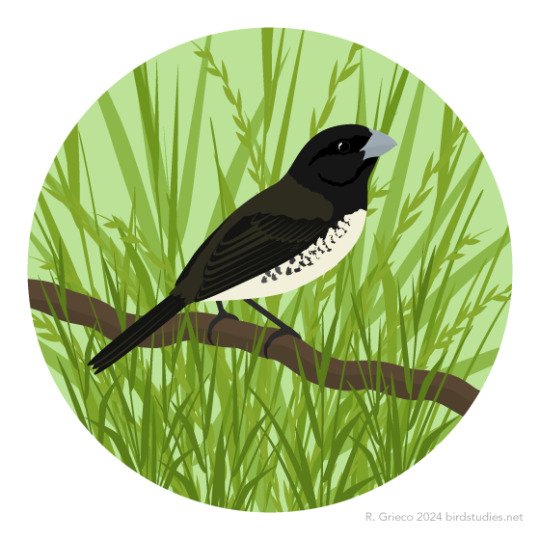
April 2, 2024 - Yellow-bellied Seedeater (Sporophila nigricollis)
Found from Costa Rica south to Brazil and northeastern Argentina, but not in much of the Amazon basin, these seedeaters live in grassy habitats. Usually foraging in small flocks or pairs, they eat mostly grass seeds. They weave cup-shaped nests from grass, fibers, twigs, and spiderwebs near the ground in bushes or trees. Females lay clutches of two or sometimes three eggs.
#yellow-bellied seedeater#seedeater#sporophila nigricollis#bird#birds#illustration#art#grassland#birblr art
62 notes
·
View notes
Text

April 1, 2024 - White-headed Robin-Chat (Cossypha heinrichi)
Found in parts of the Democratic Republic of the Congo and Angola these Old World flycatchers live in forests, often near water, and sometimes in savannas. They eat insects, especially ants, foraging on and near the ground and following driver ant columns. Little is known about their breeding behavior, though fledglings have been seen in November and a bird in breeding condition was recorded in September.
#white-headed robin-chat#old world flycatcher#cossypha heinrichi#bird#birds#illustration#art#water#birblr art
69 notes
·
View notes
Text

March 31, 2024 - Gray-headed Babbler (Stachyris poliocephala)
Found in parts of Thailand, Malaysia, Brunei, and Indonesia, these babblers live in forests. They feed on insects and occasionally fruit, foraging in leaf litter on the forest floor, in undergrowth, and into trees. Breeding between January and September depending on the area of their range, they build cup-shaped or domed nests on the ground from fine roots and fibers, covered in moss and dead leaves. Females lay clutches of two eggs.
51 notes
·
View notes
Text
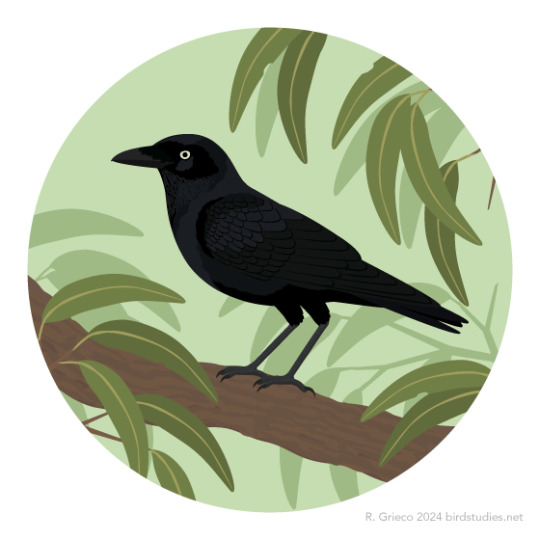
March 30, 2024 - Forest Raven or Tasmanian Raven (Corvus tasmanicus)
Found in parts of eastern and southeastern Australia, including Tasmania and nearby islands, these ravens live in a variety of habitats, particularly woodlands and pastures. Foraging in pairs, family groups, and larger flocks, they eat invertebrates, small birds and mammals, eggs, carrion, lizards, seeds, fruit, and other plant foods, including nectar, usually foraging on the ground or in low vegetation, sometimes in shallow water. They may dip their food in water before eating it and cache food for later. They build large bowl-shaped nests from sticks, bark, leaves, feathers, grass, wool, fur, seaweed, and sometimes horse manure in trees, on rock ledges, or on or near the ground. Females incubate clutches of three to six eggs and both parents feed the chicks.
93 notes
·
View notes
Text

March 29, 2024 - Sharp-billed Canastero or Lesser Canastero (Asthenes pyrrholeuca)
These birds in the ovenbird family are found in shrublands, grasslands, wetlands, and other open habitats. Breeding in southern Argentina and Chile, part of their population migrates as far north as Uruguay, Paraguay, and Bolivia for the winter. They eat arthropods, foraging alone or in pairs mostly in low vegetation and often joining mixed-species flocks. Their round nests with side or top entrances are built in bushes or on the ground from small twigs and lined with soft plant material, hair, and feathers. Females lay clutches of two to four eggs.
#sharp-billed canastero#canastero#ovenbird#asthenes pyrrholeuca#bird#birds#illustration#art#grassland#birblr art
57 notes
·
View notes
Text
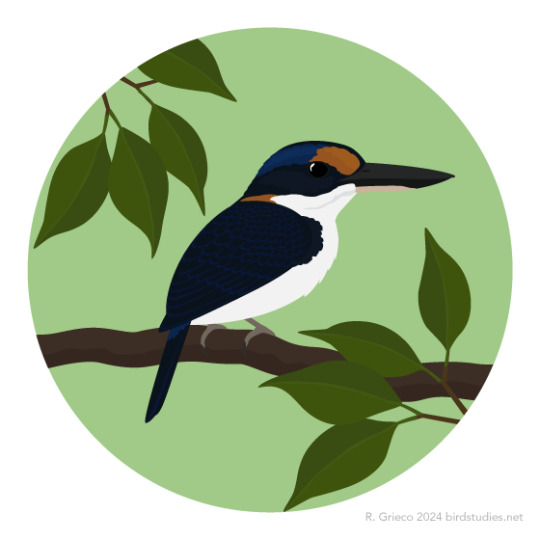
March 28, 2024 - Rufous-lored Kingfisher (Todiramphus winchelli)
These kingfishers are found in lowland forests in the Philippines. They eat large insects and other invertebrates, usually foraging high in the canopy, but also capturing prey on the ground. Little is known about their breeding behavior, though one of their nests was observed in an arboreal termite nest. They are classified as Vulnerable by the IUCN because of rapid population declines due to deforestation in their range.
#rufous-lored kingfisher#kingfisher#todiramphus winchelli#bird#birds#illustration#art#water#birblr art
89 notes
·
View notes
Text
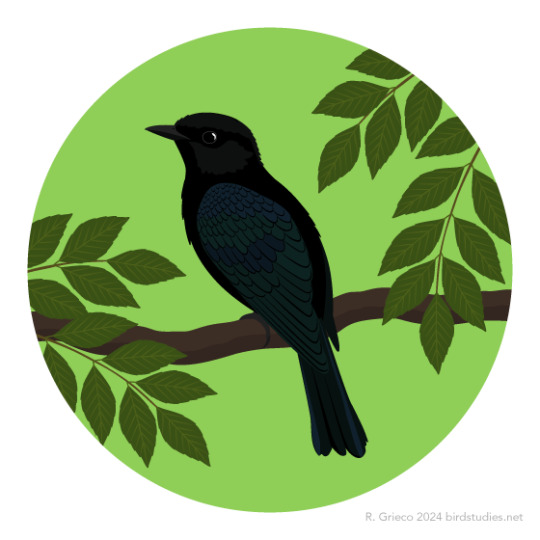
March 27, 2024 - Philippine Drongo-Cuckoo (Surniculus velutinus)
Found in the Philippines, these cuckoos live in forests and bamboo woodlands. They feed on insects, foraging in the canopy of the forest. Nothing is known about their breeding behavior, though their close relatives are brood parasites, laying their eggs in the nests of other species. Though they are classified as a species of Least Concern by the IUCN their population is thought to be declining due to continuing habitat destruction.
#philippine drongo-cuckoo#cuckoo#surniculus velutinus#bird#birds#illustration#art#tropical#birblr art
94 notes
·
View notes